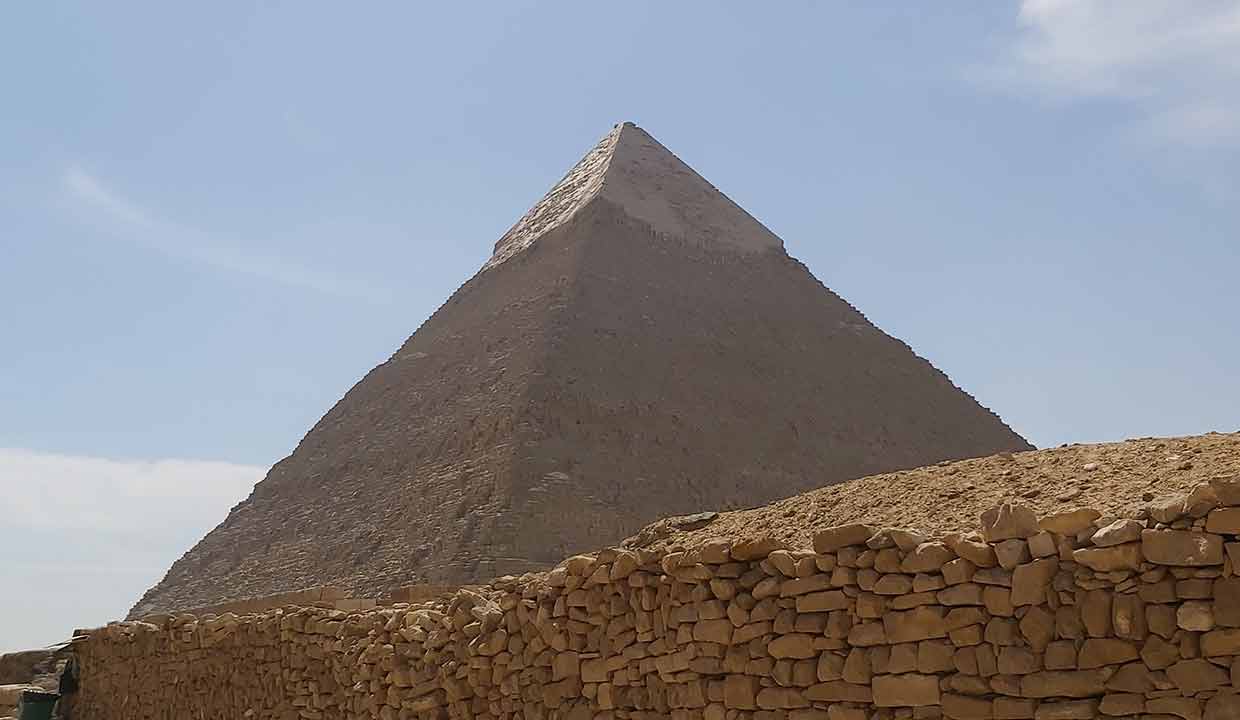The Pyramid of Khafre: A journey through limestone, leading from the heart of Giza to the cosmos’ embrace.
In the vast expanse of the Giza plateau, where time seems to stretch infinitely, the three iconic pyramids stand as a testament to ancient ambition, innovation, and reverence for the afterlife. Of these three, the Pyramid of Khafre (or Chephren, its Greek name) occupies a unique position, both geographically and historically. Let’s embark on a journey through the annals of time to understand the significance, architecture, and mysteries surrounding this ancient marvel.
Historical Background
The Pyramid of Khafre was constructed during the 4th dynasty of the Old Kingdom of Ancient Egypt, approximately in the mid-third millennium BC. Built for Pharaoh Khafre, the son of Pharaoh Khufu (who commissioned the Great Pyramid), it serves as his tomb, a bridge between the earthly realm and the cosmos.
Architectural Splendor
The Pyramid of Khafre stands at an original height of about 143.5 meters (471 ft), but over time, erosion and human interventions have reduced it to approximately 136.4 meters (448 ft). Although it’s slightly shorter than the Pyramid of Khufu, its elevated location on the plateau can give it the illusion of being taller when viewed from a distance.
Its base covers an area of approximately 215.25 meters (706 ft) per side. An interesting feature of the Pyramid of Khafre is the presence of the remaining casing stones at the top, which give us a glimpse of how the original pyramids might have looked. These casing stones were made of smooth, white Tura limestone, intended to make the pyramid shine brilliantly under the sun.
Internal Layout
The interior of the Pyramid of Khafre follows a relatively simple design, especially when compared to the Great Pyramid. It consists of an entrance on the north side leading to a descending passage, which connects to both a burial chamber and an ascending corridor. The burial chamber houses a black granite sarcophagus, believed to have once held the body of Pharaoh Khafre.
The Great Sphinx Connection
Adjacent to the Pyramid of Khafre is the enigmatic Great Sphinx of Giza. It’s widely believed that the face of the Sphinx represents Pharaoh Khafre himself, further establishing the pyramid’s connection with the pharaoh. This monumental statue, with the body of a lion and the head of a human, could represent the might and intellect of the pharaoh, solidifying his divine rule over both the natural and supernatural realms.
Symbolism and Cultural Significance
Like all Egyptian pyramids, the Pyramid of Khafre was much more than a mere tomb; it was a cosmic diagram, symbolizing the pharaoh’s ascent to the stars. The pyramid’s shape might have been inspired by the benben, a primordial mound that ancient Egyptians believed rose from the watery chaos at the beginning of time. By being buried in such a structure, the pharaoh hoped to merge with the sun god Ra and continue his journey in the afterlife.
Conclusion
The Pyramid of Khafre stands not only as a marvel of ancient engineering but as a profound statement of cultural and spiritual beliefs. As the sands of time continue to shift around its base, the pyramid, like its two counterparts, remains unyielding, a symbol of humanity’s eternal quest for meaning, permanence, and connection with the cosmos.
